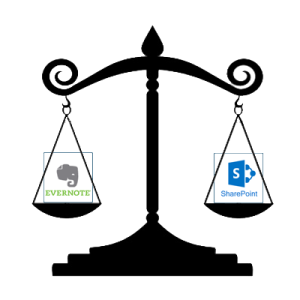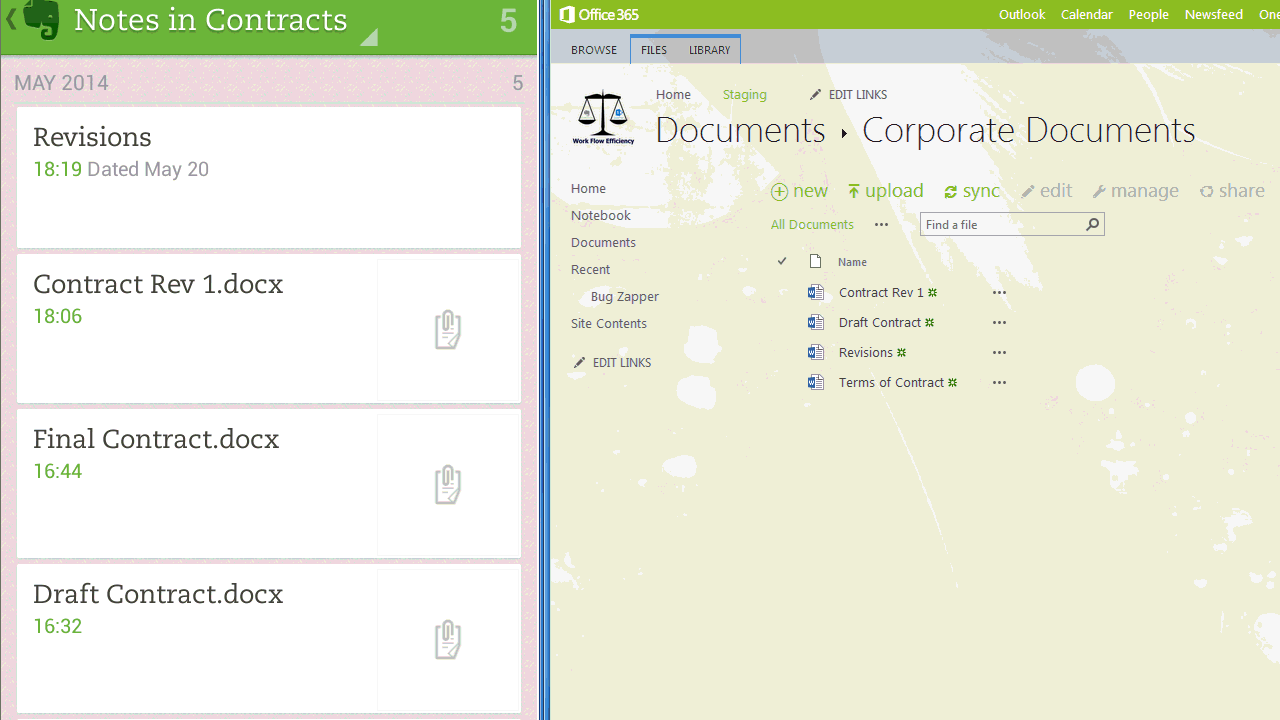
If there’s one thing lawyers have in common, it’s paperwork—lots and lots of paperwork. Notes, depositions, contracts, agreements, waivers, applications—all of this adds up to a lot of paper that needs to be safeguarded and accessible, which is why SharePoint and cloud-powered tools are an increasingly attractive and efficient option for the legal industry.
Why SharePoint Makes Sense in Law Firms
If you work at a mid to large-sized law firm, there’s a good chance you’re already using SharePoint, a collaborative platform from Microsoft that offers a myriad of functionalities. Whether it’s hosting a video conference across multiple locations or organizing materials for your case, SharePoint can help you get the job done.
Many North American law firms depend on SharePoint for document management and as their internet/intranet portal. There are many reasons why many law firms are using SharePoint; let me list some of them:
- Content aggregation: SharePoint can be used to create a true intranet portal, being the interface – via a web browser – between the user and a variety of data sources such as your document, financial or content management systems as well as linking to external WWW sites (free and subscription). Using SharePoint Designer, one can create well-designed portal interfaces to improve access to information.
- Software integration: SharePoint can work well with other software (of course, including other Microsoft products which are heavily used by most law firms); in addition, there are many third-party vendors providing value-added software add-ons to make SharePoint easier to use or to improve functionality.
- Better search: SharePoint offers quite a good search – including faceted searching – than the native search in most document management systems.
- OneDrive Pro: Private storage that can be synced to your desktop.
But law firms see that more and more other cloud services are used by partners, employees, and clients. Cloud-based tools such as Evernote, Basecamp, and Google Docs are quickly gaining ground as employees are looking for more efficient, productive functionality that’s not hindered by ties to a physical location or interoffice equipment.
Evernote inside Law Firms
There’s no denying that SharePoint offers robust functionality in a variety of applications and, as an on-premise solution, is undoubtedly effective. To add increased flexibility and agility to the workflow mix, Evernote is also becoming an increasingly popular tool for professionals, including lawyers.
Evernote rocks for people who are constantly on the run and need to take many notes or reference/search for some information.
Many lawyers use Evernote when compiling content for a client. Basically, you can create an Evernote notebook for each of your clients and include all that information in that note. You can include literature pieces, PowerPoint presentations, and notes when you talked to the client on the phone. Let’s say you’ve already spoken to a client named Bob and jotted down some notes in Evernote. Can’t remember anything more than Bob’s first name? No worries – just type in “Bob” and Evernote will deliver it up for you.
Also, many lawyers use Evernote to help them to stay on track when running around for meetings. For example, they include all of the times of where they need to be and when. And many use Evernote for pictures of things to remember, like the license plate of a rental car when they travel, or where they park when they are out.
And that’s exactly why Evernote is so appealing to those who are in the legal profession.
But there is a big challenge here: your law firm is using SharePoint for central document management. How do you upload all your Evernote notes to SharePoint (so they can be shared via SharePoint sharing)? How do you automatically download important literature pieces from SharePoint so they can be handy and accessible via your Evernote?
cloudHQ will integrate your Evernote with SharePoint/OneDrive Pro
Because cloud tools such as Evernote are growing at a rapid rate and so many new documents are generated by these cloud services, it is becoming a nightmare to integrate all these new cloud services into your central SharePoint. But don’t worry—we’ve got you covered. Allow us to introduce you to the ultimate cloud trifecta: Sharepoint, Evernote, and cloudHQ.
With cloudHQ, you can setup two ways to sync any Evernote accounts used in your organization with the SharePoint Document Library. Or as an individual, you can setup sync of your own Evernote account to your personal OneDrive Pro account or with the SharePoint Document Library you have access to.
The setup is very simple:
- Just go to https://cloudHQ.net/sync/evernote/sharepoint.
- Click on “Create Account.”
- Authorize your Evernote account.
- Click on the SharePoint/One Drive icon and authorize your OneDrive Pro account or SharePoint Document Library.
And here is a short video showing cloudHQ in action:

cloudHQ will constantly sync data between Evernote and SharePoint. So, if you are using Evernote and your colleagues are browsing the SharePoint web portal in the office, all your Evernote notes will be available for them in real time. They can have access to the documents and other key elements without requiring everyone to use Evernote.